The beach at Cleethorpes is next to the railway station. Kids are riding donkeys, digging castles and playing football on smooth, endless sands. There’s a waft of vinegar and frying and the jingle of claw machines. Two minutes from the train and I’m sitting on what’s left of the Victorian pier outside the world’s biggest fish and chip shop, Papa’s. Lunch is haddock (from £8.99 with chips) in crispy batter, light as tempura, and a Hull pattie (£1.89) that tastes like battered sage and onion stuffing.
Cleethorpes pier has suffered fires, failed takeovers and partial demolition during the second world war; it has hosted nightclubs, bingo and wrestling. A local consortium restored its wooden walkways and stained glass six years ago and Papa’s fish and chip restaurant opened here in 2015, filling the old ballroom with round tables. Wartime forts appeared in the Humber Estuary, but essentially the east coast view has stayed much the same since the pier first opened nearly 150 years ago, financed by the railway company.
When ticketing website Trainline listed the UK’s top 100 beaches this summer, Cleethorpes was second only to Margate. The handy station, huge sands, Blue Flag awards and cafes all add to its ranking, along with access to watersports. Paddleboard sessions (£30 for adult lesson) and hire (£12) are provided by Ebb and Flow, one of several local companies energising this coastal conurbation. Cleethorpes may be a byword for seaside tackiness, but the reality is far more interesting than the reputation.
The town is full of people enjoying themselves: girls in hijabs taking selfies on the sand, boys on bikes racing down the spiral ramp from ivy-covered Ross Castle, and couples drinking on the mellow terrace behind Petit Delight and Corks 28, just off thriving Sea View Street. Even the starlings are having a good time, chittering on the pier before swirling, splitting and combining again to settle on the ferris wheel.
With four miles of wide beach, it’s easy enough to find space. I stroll through the evening light towards a rocky groyne shaped like a whale’s tail with a view towards Grimsby’s Dock Tower, elegant as the Sienese campanile (bell tower) that inspired it. There are curlews and red-legged gulls and the offshore breeze blends candy floss and seaweed. Walking back along North Promenade, I step into the neon-lit cacophony of Fantasy World and back into a childhood realm of tuppenny falls, air hockey and whack-a-mole.
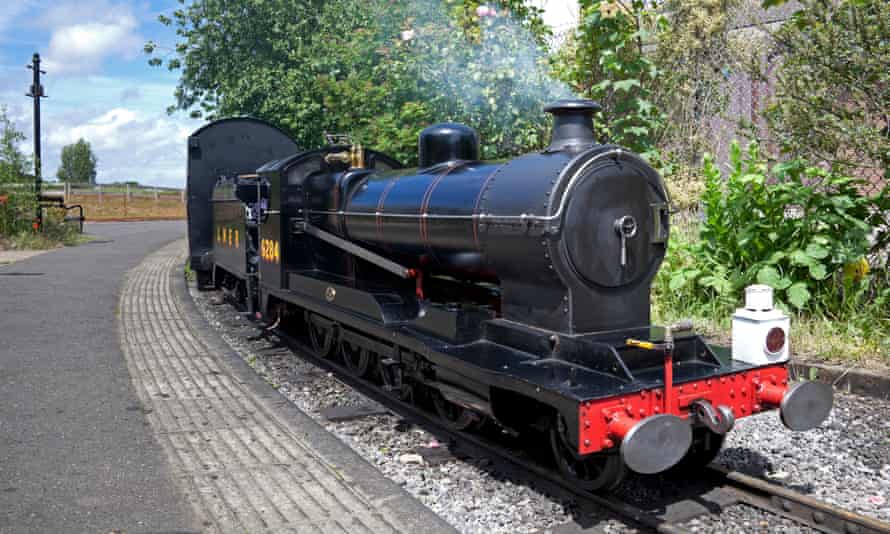
I am staying at Cloves B&B (doubles from £90), a mock-Tudor end-of-terrace that is 20 minutes’ stroll along the seafront from the station and a few steps from the beach. Owners Maria and Nick Ross first met in the army; their rooms are stylishly neat and breakfasts include gourmet haddock florentine with garden chives.
Next morning, I ride the 73-year-old Cleethorpes Coast Light Railway from the nearby leisure centre to its main lakeside station (£4.50 return), where a popular beer garden surrounds the tiny Signal Box Inn. “The World revolves around Cleethorpes,” reads the inscription under a granite globe, a few minutes’ stroll along the coast path. This is the Greenwich Meridian Line, slanting over the tarmac so that visitors can stand with a foot in each hemisphere near a signpost showing distances to Moscow, New York and London.

Seven years ago, I set off with friends from Peacehaven in East Sussex along the 273-mile Greenwich Meridian Trail (GMT), which follows the line of the prime meridian. Over months, we met sporadically and progressed slowly northwards through seven counties, stopping about halfway up Cambridgeshire as the trail got too far away for day trips. Here in Cleethorpes, the meridian finally hits the coast again. I trek a couple of miles south past woods, caravans and a wind farm (the area’s strong winds and huge tides are great for renewable energy) to catch up with the GMT on a flood bank above Tetney Marshes.
The coastal walk back is a spectacular mix of saltmarsh, dunes and golden beaches under a huge, dramatic sky. The silver leaves and orange berries of sea buckthorn line the paths. The mudflats are full of birds: scampering sanderlings, stilt-legged redshanks and egrets in saline lagoons ringed with sea lavender. I have never been so close to a murmuration of starlings, shapeshifting dizzyingly around me. I detour through the Fitties, an area of characterful wooden chalets.
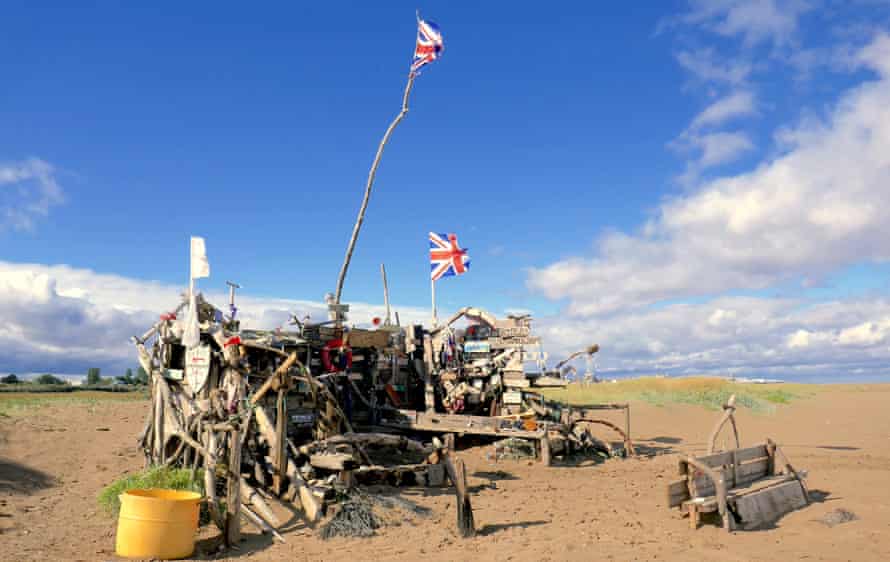
“R.I.P. Dad, Sail to somewhere happier!” reads one of many messages on an unofficial local landmark not far from the meridian monument. Known by various names, including the Buck Beck Beach Bench, this Mad Max-style mix of memorial, meeting place and organic community artwork began as a driftwood bench in 2016. Since then, it has been washed away by surging high tides and rebuilt several times, but keeps growing and evolving, sprouting dangling shells, tattered flags or grinning model skeletons. Another note, nailed to a charred log, reads DON’T TAKE THE SHORT CUT! BLACK FEET! NO SHOES. Cleethorpes’ resort manager, ex-police-inspector Scott Snowden, points out the safest route and tells me his team have rescued many unwary visitors from racing tides, but he enthuses about the views and is keen to promote ecotourism in the area.
Back in town, there are plenty of great places to eat after a day outdoors. The new Calcutta Street Kitchen opened on Sea View Street in September, serving British Indian fusions. If you ever wondered what naan bread would be like cooked with peanut butter or goat’s cheese, this is the place to find out. Or haddock rogan balti? You can even have an Indian version of fish and chips involving lightly spiced battered salmon and potato pakoras.
At first light on my last morning, I head to the seafront. The sky duly obliges with a shifting show of lilac, orange and molten gold, reflected in the wet sand and the gull-studded puddles. Ebb and Flow offers kaleidoscopic sunrise paddle-boarding (£15). Riverhead is the place for brunch: homemade granola and fruit compote, smoothie bowls, salads or irresistible cakes. Nic Till, who runs it, grew up here and spent 10 years abroad. Her cafes teleport the freshness of New Zealand’s coffee-shop culture into the middle of Cleethorpes and neighbouring Grimsby. A third branch and a new bakery are opening soon – partly to supply a lockdown-inspired demand for Riverhead’s brownie boxes.
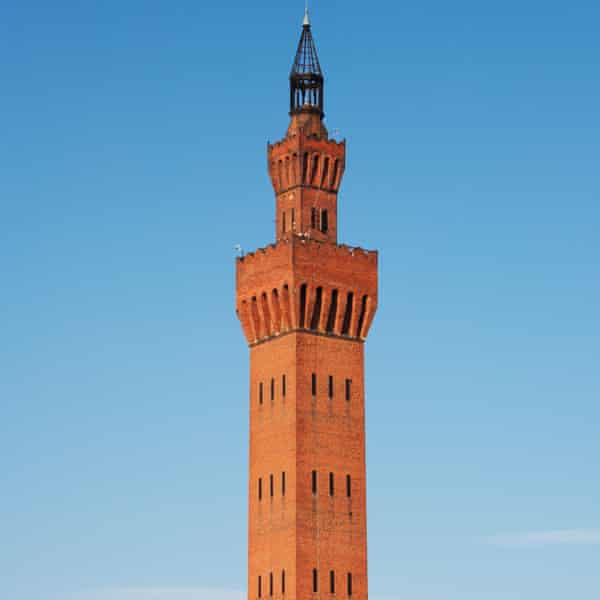
Here as elsewhere, local businesses have often been nimbler than impersonal chains in response to the pandemic. While Grimsby has recently lost several big-name shops, Gemma Winter opened her innovative indie store, It Started with a Stitch, a year ago on pretty Abbeygate. It showcases products from 50 different small businesses, such as handmade jewellery, local honey and notebooks saying: “She is Grimbarian and she is fierce”.
The shop is close to Grimsby Town station, which has an all-year cycle hub that rents out bikes (from £7.50/hour) and gives out maps of routes around coast and wolds. It’s seven minutes from Cleethorpes by train or half an hour direct from Cloves B&B on buses 9 or 10. A PlusBus ticket, for a small fee on top of the train fare, covers a day’s unlimited travel around Cleethorpes, Grimsby and nearby towns like Immingham.
With its bleak-sounding Viking name and industrial reputation, Grimsby is more often a punchline than a favoured holiday destination. I’ve never visited before, even when I lived across the water in Hull, and find myself wandering open-mouthed round the Minster, with its stained-glass dockside scenes and stone medieval knight, stopping for coffee in the pew-seated cafe, revamped in July. St James’ Square outside also had an impressive makeover this summer and hosted a new Festival of the Sea.
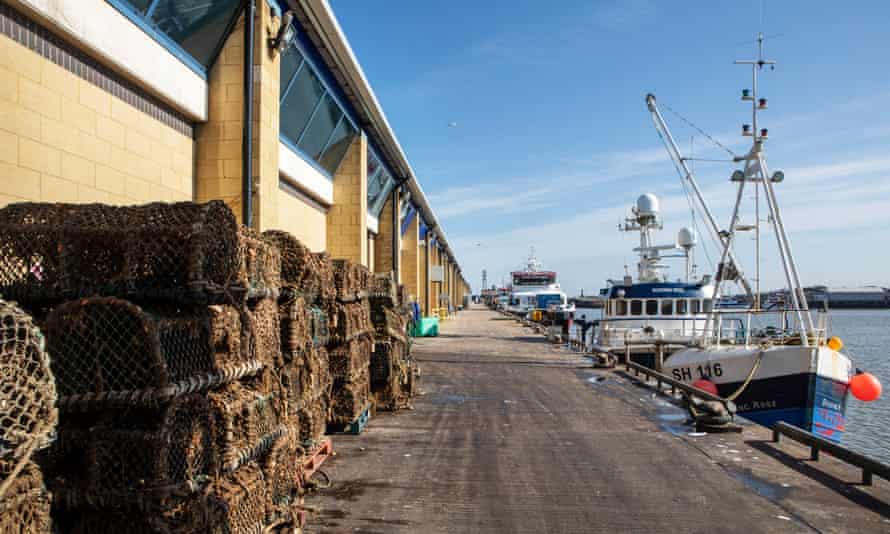
Grimsby trawlerman Ron Telford, who was third hand on board, shows me round the 1950s trawler Ross Tiger. It’s now moored permanently outside the Fishing Heritage Centre, a 10-minute stroll towards the docks (£4/£8.50 for kids/adults). “That was my bunk,” he says, pointing to a narrow bed in the aft. His tales bring the old trawler alive: braiding nets, tying cod lines or hacking ice with a shovel in the UK’s most perilous peacetime job. A list in the skipper’s polished wooden cabin records the serious quantities of tobacco and alcohol laid in for a 15-day voyage. The heritage centre recreates the 1950s, when Grimsby was the world’s biggest, busiest fishing port, complete with the smell of fish and real water pouring out of bulging nets onto rocking, storm-shadowed decks.
Five minutes’ walk away, along the River Freshney and over Corporation Bridge, Docks Beers is a craft brewery based in an old red-brick church since 2018. Upstairs, the new Docks Academy opened in March 2020, closed again a few days later, and now has a lively schedule of comedy, music and theatre. There are tours on Sundays and the taproom downstairs serves the brewery’s easy-drinking craft lager, fruity IPAs and more, plus a new range of spirits like Maritime Gin, infused with sea buckthorn berries.
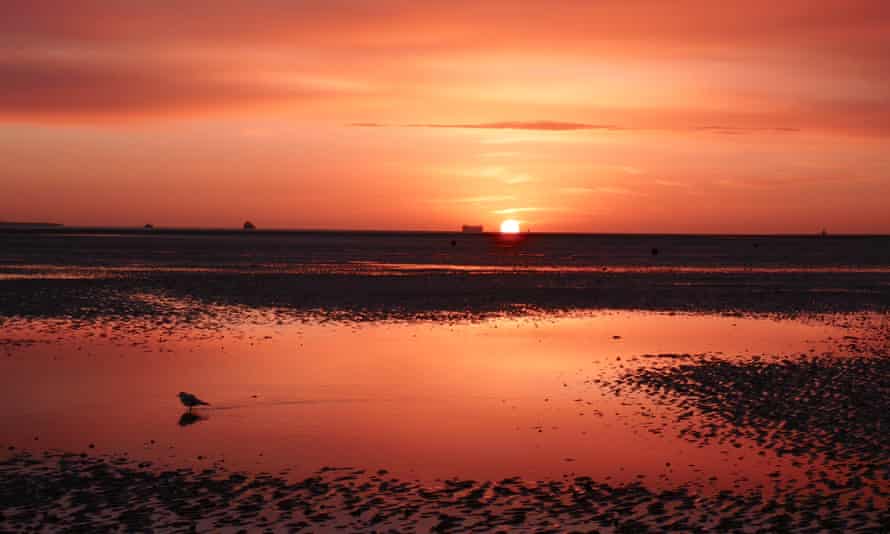
The brewery has hosted local street-food sellers, including a converted fishing boat serving smoked fish from Alfred Enderby on the docks nearby. This Grimsby institution offers book-ahead tours (£10) and owner Patrick Salmon (a classic case of nominative determinism) is busy with the morning’s work: wood smoke fills tall, tar-coated brick chimneys and drifts through racks of filleted wild haddock.
Outside, there are plans to regenerate the old ice factory and surrounding area. The half-hour walk back to the station takes me past Riby Street, with its row of fishmongers, and the original Riverhead cafe, where I pick up some fruit loaf for the journey home. In 2022 there could be direct daily trains between London and Cleethorpes, transporting passengers straight from Kings Cross to the docks and sunrise-facing beach.





